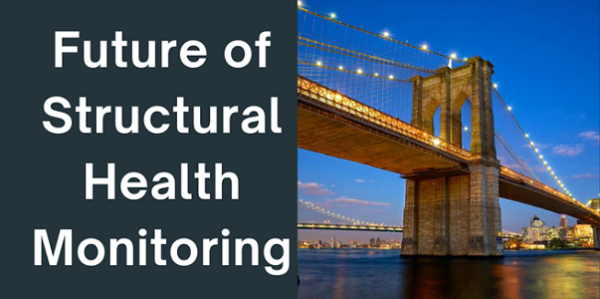With rapid urbanization occurring and infrastructure getting old, the introduction of advanced technologies to monitor and maintain the safety and longevity of extremely critical structures is more important than ever. Structural Health Monitoring (SHM) has therefore come to be seen as an essential method for assessing the condition of buildings, bridges, dams, and other infrastructure and keeping them safe and operational over time. The field of SHM has grown a lot in recent times, with the technological development of electronics-based solutions that can offer real-time, highly accurate, non-destructive and non-invasive methods of determining the structural integrity of a structure.
As cities and infrastructure networks age, the consequences of building failure become much graver, whether it is bridge collapse, dam breach, or structural deterioration of high-rise buildings. Before we reach such points of catastrophic failure, the integration of advanced electronic systems into SHM is fast changing the way we protect the built environment. The blend of the most advanced electronics, artificial intelligence, and sensor technologies will create the future of SHM, giving a smarter, safer, and sustainable management approach for infrastructures.
What is Structural Health Monitoring (SHM)?
At its core, structural health monitoring is the use of sensors and other devices to measure and analyze the performance of a structure with time. Early detection of potential damage, wear, or unlawful behavior on the infrastructure permits SHM for prompt maintenance or repair. Conventional methods of inspection, like visual inspection or manual measurements, can be time-consuming and translating subtle issues into reliable decisions is often beyond the scope of these systems. A better choice would be SHM systems that constantly monitor the structure and detect subtle changes in performance level.
Usually, an SHM system incorporates sensor hardware like strain gauges, accelerometers, and displacement sensors; signal conditioning units; and data acquisition systems with software for analyzing and storing data in real-time. The increasing involvement of electronics, including wireless communication, IoT-enabled devices, and real-time data processing in these systems, has hugely enhanced their capabilities.
The Role of Electronics in Structural Health Monitoring (SHM)
Electronics have brought another dimension to SMH by rendering it more precise, in a more efficient way, and cost-effective. In earlier times, infrastructure inspection was on an irregular basis and involved inspections by human, which sometimes led to the timely solution of an emerging problem. Modern electronics, however, have enabled the continuous and automated monitoring of structures, offering various benefits:
- Wireless Technology: SHM benefitted greatly from the advent of wireless technology. Wireless sensors, mostly battery-powered or energy harvesting systems, allow for flexible installation on a structure in the absence of complex wiring or installation infrastructure. Both flexibilities and scalability increase cost-effectiveness and thereby cost reduction of monitoring installations.
- Real-Time Data Collection and Analysis: Electronics allow SHM systems to gather data from a wide variety of sensors distributed throughout a structure. This data is then processed and analyzed in real time, awarding an instantaneous evaluation of the health condition. For instance, an accelerometer may detect vibrations and discern abnormal ones that might point toward an incipient structural failure, while the strain gauge may measure stress levels reaching to fracture or fatigue.
- Integration with AI: The very future of SHM encompasses the weaving of electronics with AI, in particular, machine-learning algorithms.AI-assisted SHM systems optimize maintenance schedules by analyzing data to identify patterns and predict possible failure locations. By considering past data and patterns, artificial intelligence (AI) enhances decision-making and potentially avert catastrophic failures and save billions of dollars in repair expenses.
- Remote Monitoring: Infrastructure complexity and dispersion create increased remote monitoring requirements. Electronics advancement, especially by the IoT, has given SHM systems remote access capabilities for engineers and decision-makers to monitor infrastructure health from any location worldwide, thereby reducing the need for far too many site inspections and incurring high operational costs, and facilitating faster responses in case of any signs of damage.
- Durability and Longevity: Electronics in SHM systems are being designed with increased durability against environmental conditions such as huge temperature variations, varying degrees of humidity, and electromagnetic interference. This helps that the sensors and systems function reliably even for long periods in adverse cases.
Key Applications of Structural Health Monitoring (SHM) in Infrastructure:
The transmission of SHM technology has been on the upward trend across industries. The major applications are:
- Bridges and Highways: Bridges are the significant infrastructure components prone to damage and deterioration from external forces such as traffic loading and seismic activity. Weather conditions can also cause damage. The SHM system detects structural degradation like cracking, corrosion, or fatigue, in early stage thus allowing engineers to schedule repair or reinforcements before failure. It is also through continuous monitoring of highway infrastructure that the safety of road users can be improved by good identification of problems with road surfaces and subgrades.
- Dams and Hydroelectric Plants: The water-related infrastructure are prone to various risk like erosion, seepage, and seismic activities. SHM provides monitoring on water level, internal pressure, and critical conditions to ensure these structures continue to operate safely. For instance, sensors may monitor the deformation of dam walls or foundation integrity thereby issuing early warnings of possible failure.
- High-rise structures: Urbanization is a widely emerging phenomenon; thus, with an extraordinary increase, tall buildings have become increasingly common. These buildings’ SHM systems continue to monitor how the structure settles down when subjected to wind, earthquake, or other events. Real-time data analysis ensures that engineers can maintain its stability and safety throughout the usage of the building.
- Airports and Transport Systems: Airports and other transportation hubs are continually monitored since they are of utmost importance as infrastructure. SHM systems offer a means to inspect runways, terminals, and other facilities for damage that may compromise safety or inhibit travel. There are also systems to monitor operations of bridges, escalators, and elevators.
The Structural Health Monitoring Market: A Growing Industry
Over the past few decades, SHM has undergone a realization of tremendous development. With the governments, companies, and engineering firms recognized more and more about infrastructure safety, investments in SHM techniques have gained traction. Pristine Market Insightsreveals that there is immense scope for the SHM market to increase, given the rise in demand for advanced sensor technologies, wireless systems, and AI-based data analytics platforms. With their use, maintenance would become cost-effective with lower downtime, ensuring proper function for a longer duration until maintenance.
While an increasing global awareness of risks resulting from aging infrastructure has also been keeping the demand for SHM high, SHM also offers countries that are trying to upgrade and maintain infrastructure while keeping budgets tight an inexpensive way to ensure public safety while keeping repair and replacement costs in the longer term, if not in the shorter.
The Road Ahead: Challenges and Opportunities
Although SHM shows significant potential, there are still barriers to address. For instance, the high capital cost of implementing an SHM system and the complex issue of installation into pre-existing infrastructure combine to become major deterrents to its wide adoption. Other issues expected to be addressed in the coming years include the reliability of the data, cybersecurity threats, and standards for SHM technology.
The opportunities, however, are simply enormous. As technology develops further, now even more sophisticated systems will be brought forth to carry out real-time, predictive maintenance, so as to preserve the infrastructures in safety and serviceability for years. The very future of SHM lies in the development of smart cities wherein every structure is continuously monitored and optimized for safety and serviceability. This article clearly illustrates that the future of SHM is tied to the evolution of electronic and sensor technologies. The human ability to leverage AI in real time with the help of wireless systems will allow humans to take appropriate active decision processes, ultimately manage failure risk, and extend the life of our vital infrastructure. The structural health monitoring market is continuing to evolve and integrate AI, automation, and advancement in electronic sensor technology will allow and assure our safety and resiliency of infrastructure systems and services, while contributing to the longer-term viability of our cities, transportation, and public infrastructure services. With the advancement of electronic technologies, SHM continues to transform existing practices for asset maintenance and repair, and assists to create a safe and worry-free built environment for our future generations.
















